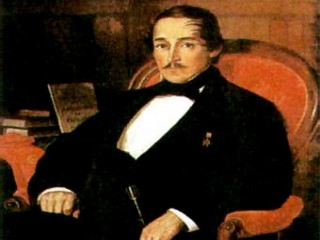
Francisco De Paula Santander biography
Date of birth : 1792-04-12
Date of death : 1840-05-05
Birthplace : Cúcuta, Norte de Santander Colombia
Nationality : Venezuelan
Category : Historian personalities
Last modified : 2011-04-27
Credited as : General, statesman, Man of Laws
Francisco de Paula Santander, a Colombian general and statesman, was one of the leaders of Spanish American independence. He later served as first constitutional president of the Republic of New Granada.
Francisco de Paula Santander was born on April 12, 1792, at Rosario de Cucuta near the Venezuelan border. His family were cacao planters, members of the local gentry. When the independence movement began in 1810, he was a law student at Bogota, but he soon left his books to join the patriot forces. Although the first independent government was crushed in 1816, Santander escaped to the eastern plains, or Ilanos, and there helped organize a base of continuing patriot resistance.
Accepting the leadership of the Venezuelan Simon Bolivar, Santander took part in the expedition that climbed the Colombian Andes, won the decisive victory of Boyacia (Aug. 7, 1819), and finally expelled the Spaniards from Bogota. Bolivar placed him in charge of administering the liberated provinces, and 2 years later he was chosen vice president of the new nation of Gran Colombia, which included present-day Venezuela, Colombia, Panama, and Ecuador. Since Bolivar, as president, preferred to continue fighting at the head of his armies, Vice President Santander became acting chief executive.
Though he held the rank of general, Santander is chiefly remembered as a vigorous civil administrator. He lacked Bolivar's magnetism but was a man of impressive personal bearing and dignity. Highly conscious of his own prerogatives, he nevertheless generally respected legal formalities: Bolivar dubbed him the "Man of Laws." As ruler, furthermore, he promoted a series of liberal reforms designed to curb clerical influence, aid economic development along lines of free enterprise, and extend public education.
The stability of Gran Colombia was shaken in 1826 by the outbreak of a revolt in Venezuela under Jose Antonio Puez. Even more serious was a growing conflict between Santander and Bolivar, who later that year returned from Peru. Santander suspected Bolivar of seeking to change the constitution by illegal means and also resented his leniency toward Pi¡ez in finally settling the Venezuelan revolt. When Bolivar reassumed full control of the government in 1827, Santander drifted into open opposition, and in 1828 he was exiled on the charge, never really proved, of complicity in a plot against Bolivar's life.
After the dissolution of Gran Colombia in 1830, Santander's supporters gained control of the new Republic of New Granada, corresponding to modern Colombia plus Panama. Santander returned to serve as president from 1832 to 1837. He now showed greater caution in pressing liberal reforms, but he energetically repressed would-be conspirators, and he succeeded in organizing the national administration on a sound basis.
Santander retired briefly from public life on leaving the presidency, but he soon emerged to win a seat in the lower house of Congress. There he joined the opposition to his successor, the moderate liberal J. I. Marquez, whose election he had opposed. He was still serving in Congress at the time of his death in Bogota on May 5, 1840.
Santander's political and administrative career, roughly from 1819 to 1827, is related in detail in David Bushnell, The Santander Regime in Gran Colombia (1954). He is also discussed in Jesus Maria Henao and Gerardo Arrubla, History of Colombia (1938).

















